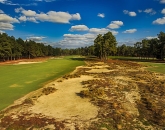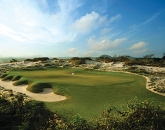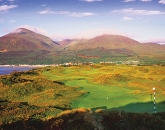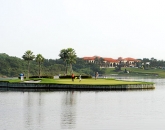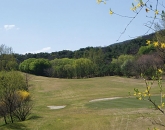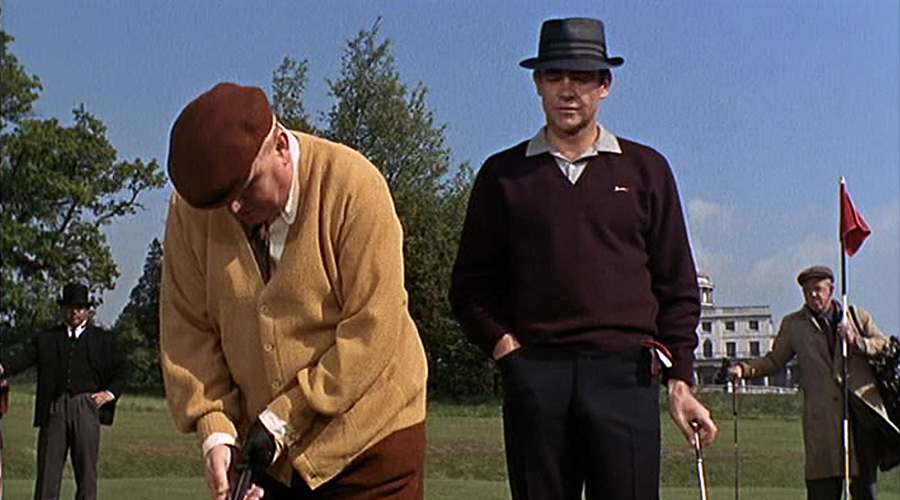 There's a good chance that many of those who have little idea of golf will know Royal St George's. In Goldfinger, one of the most popular of the James Bond novels, 007 defeats the evil gold magnate over 18 holes of match play at the fictitious Royal St Mark's with sleight of hand and an impressive knowledge of the Rules. In actual fact, Ian Fleming, the book's author, was a member at Royal St George's – or Sandwich as it is commonly known – and based the entire act on his beloved links, where he held an 11 handicap. Unfortunately the 1964 flick of the same name, starring Sean Connery as the super sleuth and the brilliant Gert Frobe as the baddie, used the parkland layout at Stoke Park for their encounter (it was rather closer to Pinewood Studios than the real deal). But never mind. Sandwich, about a two-hour drive from London, will be hosting a rather more important event this month with the Open Championship returning to the Kent coast for the first time since 2003.
There's a good chance that many of those who have little idea of golf will know Royal St George's. In Goldfinger, one of the most popular of the James Bond novels, 007 defeats the evil gold magnate over 18 holes of match play at the fictitious Royal St Mark's with sleight of hand and an impressive knowledge of the Rules. In actual fact, Ian Fleming, the book's author, was a member at Royal St George's – or Sandwich as it is commonly known – and based the entire act on his beloved links, where he held an 11 handicap. Unfortunately the 1964 flick of the same name, starring Sean Connery as the super sleuth and the brilliant Gert Frobe as the baddie, used the parkland layout at Stoke Park for their encounter (it was rather closer to Pinewood Studios than the real deal). But never mind. Sandwich, about a two-hour drive from London, will be hosting a rather more important event this month with the Open Championship returning to the Kent coast for the first time since 2003.
A Scotsman, Dr. Laidlaw Purves, discovered the course in 1885, and is said to have exclaimed when he looked over the land of what would become Royal St. George’s Golf Club: “By George, what a place for a golf course!” Purves, with no experience in golf course architecture, enlisted the help of Scottish greenkeeper, Ramsay Hunter, who helped sculpt what would become one of the world's most celebrated clubs. While Purves’ lack of experience could have been detrimental to the success of the design, with the help of Hunter, and aided by the superb potential this land on the Kent coast had for a fine links layout, he was able to create a course which has stood the test of time, and remains a challenging test of golfing prowess for all levels.
Only five years after the club's inception, word quickly spread of the “extraordinary new course at Sandwich” and in 1892, Royal St George’s was awarded the Amateur Championship. Just seven years after its 88 original members founded the club the course hosted its first Open Championship, in 1894. This was the first time an Open Championship had ever been staged outside of Scotland.
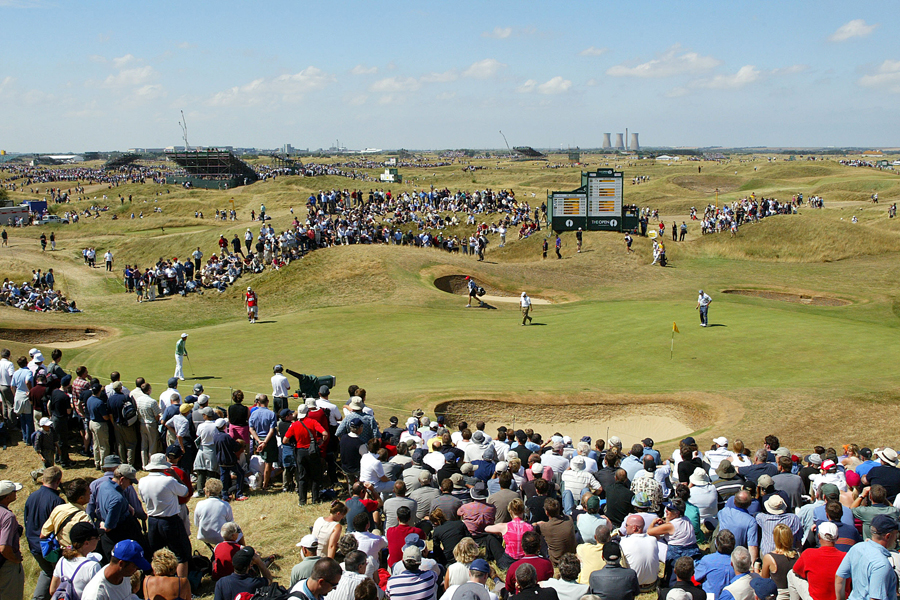 As the start of the 1894 Open Championship approached, the R&A feared a reduced number of entries due to the long journey south Scottish professionals would have to take to arrive in Sandwich. As a result, the R&A negotiated specially reduced rail fares to encourage entry to the tournament. In reality, only 14 professionals actually took advantage of these reduced rates, but the governing body needn’t have worried as a record-breaking 94 entrants made up the starting field of the thirty-fourth Open.
As the start of the 1894 Open Championship approached, the R&A feared a reduced number of entries due to the long journey south Scottish professionals would have to take to arrive in Sandwich. As a result, the R&A negotiated specially reduced rail fares to encourage entry to the tournament. In reality, only 14 professionals actually took advantage of these reduced rates, but the governing body needn’t have worried as a record-breaking 94 entrants made up the starting field of the thirty-fourth Open.
The long carries from the tee required at Sandwich, as well as tight fairways surrounded by incredibly dense rough that wind through and between massive sand dunes made for a truly intimidating test of golf. Englishman JH Taylor, the first Open champion at Royal St. Georges, turned in four rounds in the 80s for a total of 326 and a five-shot victory. His score still remains the highest winning total in the history of the Open Championship.
Taylor's efforts aside, the course has seemed to lend itself to history making performances. While it's certainly considered one of the most unrelenting layouts on the Open rota, Greg Norman's total of 267 when winning his second Claret Jug here in 1993 is still the lowest in history. It should be noted however that the Great Shark's win, as fine an achievement as it was, was achieved following two days of rain that softened the playing surfaces considerably, making the greens far more receptive than is the norm. Purists will hanker for rather more firmer (and bouncier) conditions this time around.
In 1922, when Sandwich held the Open for the fifth time, Walter Hagen became the first native-born American winner, while 81 years later, in 2003, Hagen's fellow countryman Ben Curtis became arguably the biggest surprise major victor of all time after Thomas Bjorn stumbled miserably down the closing stretch. Curtis was then ranked a lowly 396th in the Official World Golf Rankings. If a similarly ranked golfer was to follow in Curtis' footsteps this month, Peter Dawson, the R&A chief executive, will be announcing Rob Oppenheim as the "Champion Golfer of the Year". Rob who? Exactly. (Oppenheim, ranked 396th at the end of June, plies his trade on the Nationwide Tour but won't be at Sandwich having failed to qualify for the elite field).
One former champion who will be back at Royal St George's is Sandy Lyle. The Scotsman won the 1985 Open despite starting three shots back of leaders Bernhard Langer and David Graham at the start of Sunday's round. Lyle, who would go on to win the Masters in 1988, shot a final round of 70 to take the title by one stroke from Payne Stewart. His win was helped by one of the most unlikely birdies to have ever been recorded at the fourteenth hole, a stout par-five. After hitting his tee shot into ghastly rough to the left of the fairway, the laid-back Lyle, one of golf's most unassuming heroes, hacked his ball 80 yards up the cut grass, in front of the bisecting fairway ditch "Suez Canal", before firing a towering two-iron to the front of the green. He then miraculously holed the 45ft putt to rapturous applause from the English galleries.
For this year's championship, Royal St George's has been tinkered with ever so slightly in order to create the kind of challenge that the Open deserves – tinkering that the R&A believes is necessary to combat the vast distances modern professionals hit the ball, but also, they say, to make it rather more viewer friendly. The course has been lengthened by a hundred yards or so (to 7,211 yards) but perhaps more importantly, the penal rough that was seen flanking the fairways in 2003 has been cut back somewhat. Tiger Woods famously lost his ball with his first drive of the tournament eight years ago in the thick 'Yorkshire Fog Grass' that has since been replaced with a finer strain of fescue.
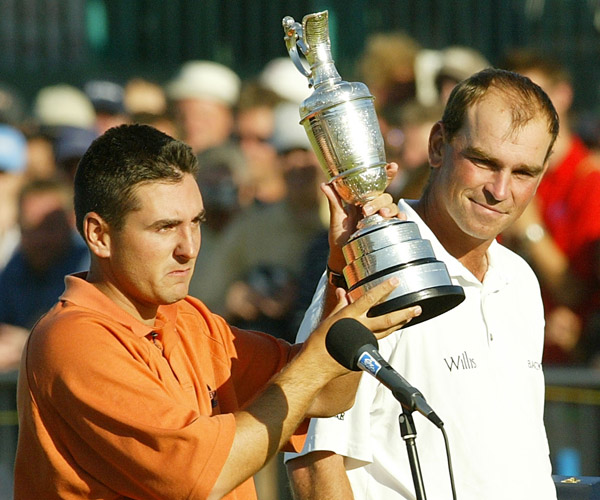 It is worth also noting that the devastatingly ugly Richborough Power Station, which is sure to hove into view during the television broadcast, has been closed. The BBC, host broadcasters of the tournament, showed a rather perverse nature in showing this facility, a few miles north of Sandwich, at every opportunity in 2003. But I digress from far more intrinsic golfing matters ...
It is worth also noting that the devastatingly ugly Richborough Power Station, which is sure to hove into view during the television broadcast, has been closed. The BBC, host broadcasters of the tournament, showed a rather perverse nature in showing this facility, a few miles north of Sandwich, at every opportunity in 2003. But I digress from far more intrinsic golfing matters ...
Par has also been changed – from 71 to a sporty 70 – because the fourth hole – perhaps the most famous on the course, which features a comically large bunker, probably the biggest in major championship golf, some 240 yards from the tee – has been shortened by two yards. Rather than playing as a 497-yard par-five, it will now play as a daunting 495-yard par-four.
What impact the hole's change of status makes on the outcome of this year's championship remains to be seen, but I'm not sure Fleming himself would approve. Bond aficionados will know that the secret agent won this particular hole from Goldfinger with a hard-earned birdie four. A regulation par doesn't sound very 007.


